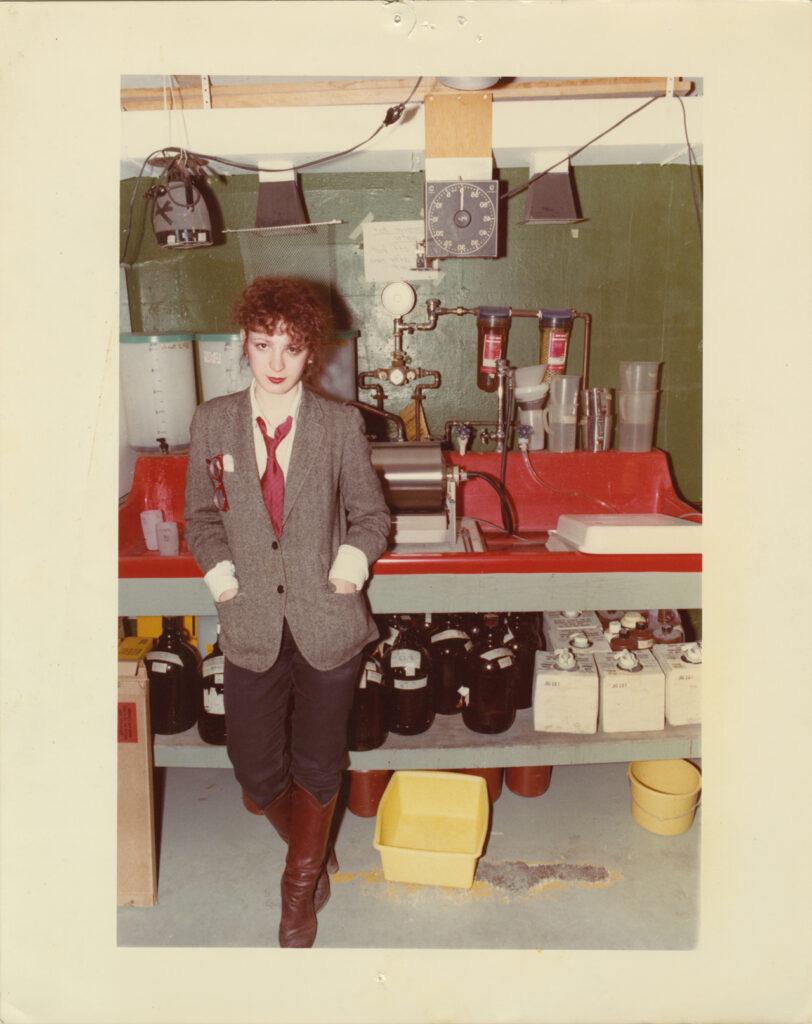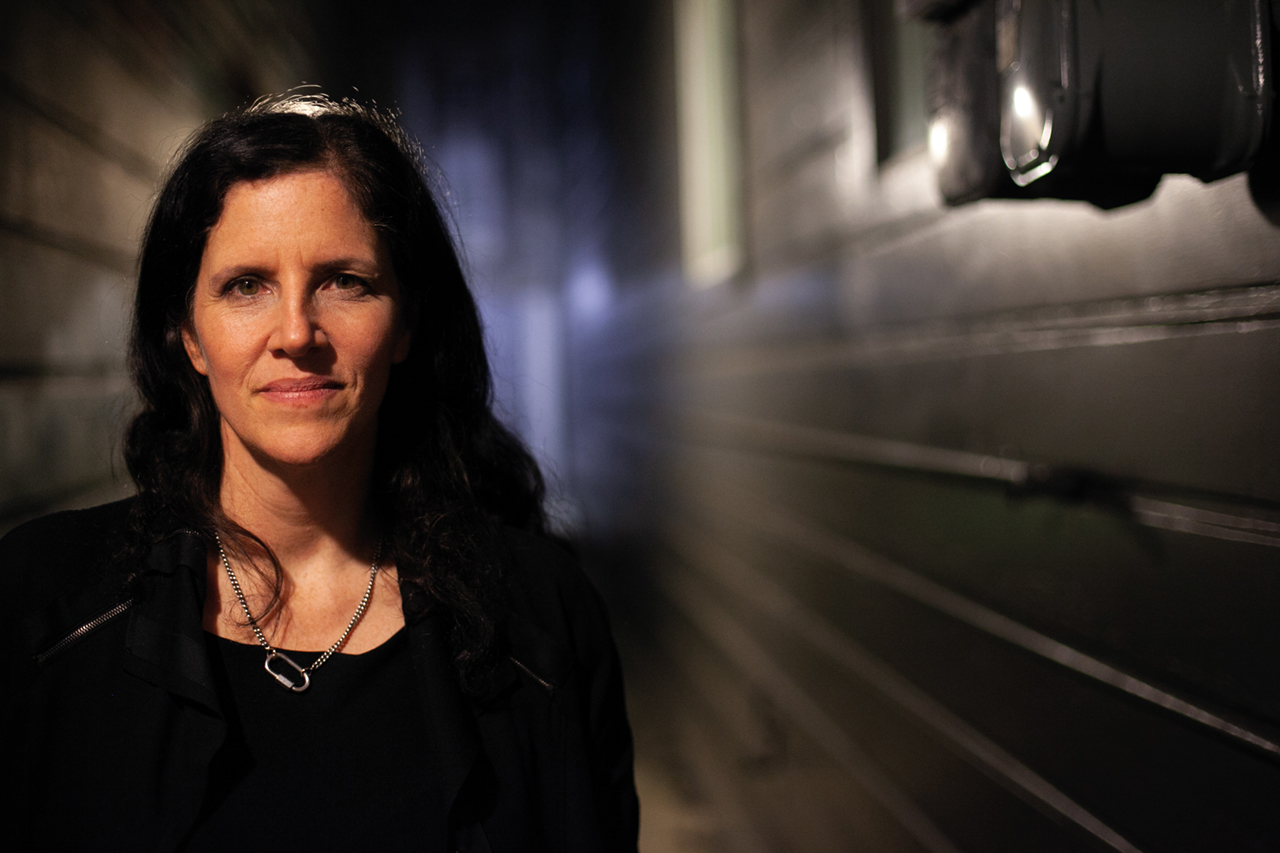When art confronts power
Laura Poitras, the film-maker best known for her Edward Snowden film, says why she’s obsessed with documenting people creating change
Film-maker and journalist Laura Poitras’s new documentary All the Beauty and the Bloodshed is about photographer Nan Goldin and her fight to reveal the role of the Sackler family in the US opioid crisis.
The Sacklers’ company, Purdue Pharma, manufactured and marketed Oxycontin, a powerful and addictive prescription opiate, but denied that their practices had contributed to the crisis.
Goldin fought to end the Sackler’s sponsorship of art gallery and museum collections around the world, in a campaign beginning in 2018. She herself had become addicted to Oxycontin after surgery in 2014 after struggling with heroin addiction in the 1980s, nevertheless continuing to produce highly regarded work.
In 2019 Purdue filed for bankruptcy and the Sackler family reached a $6 billion (£5 billion) settlement with US states and individual claimants.
Goldin narrates the story over a series of haunting slides, detailing her difficult upbringing, her grief and loss during the Aids crisis and her later addiction to Oxycontin and heroin.
Poitras is best known for her 2014 film Citizenfour about Edward Snowden’s NSA leaks, which won the best documentary feature at the Oscars in 2015.
When Big Issue North met Poitras in Manchester, she had just found out that All the Beauty and the Bloodshed was nominated in the same category for this year’s Academy Awards.
How long had you known about Nan Goldin’s work?
I had known of her work as an artist for as long as I’ve been a film-maker. I studied film-making at San Francisco Art Institute. Her work was becoming very well known. It was ground breaking, revolutionary, radical, feminist, sexual – inspiring on all those levels. I was very moved by it and even though it was presented as either photographs or slide shows, I always felt there was such a strong cinematic element to it, both the sense of place, the character and then the sequencing. Her editing and narrative storytelling are all so ground breaking. She is someone who has been on the list of great artists whose work I’ve returned to throughout my work as an artist, but it was her using her power and influence in the art world to take on the Sackler family – that for me was the hook for the type of filmmaking that draws me in.
The film is a move away from your previous features where you focused on the dangers of the post 9/11 US surveillance state. What was the inciting incident or the push-off point for this project?
I would not so much describe it as an inciting incident but more like an obsession. I followed the activism Nan was doing. And the story of someone confronting power and challenging it, creating action at a historical crossroads – this is something I’m obsessed with in my work. I keep returning to it for better or for worse.
Julian Assange did the same, and Edward Snowden. These are people who are actors in history and who are creating change. Through their stories, hopefully, there is a critique of larger society. So it was through that element that I thought I could enter the story and that I would be the right film-maker.
Nan [and the group PAIN] were doing these actions and it was something that was unfolding in real time and had all those elements of drama: not knowing what would happen next. Would they be successful? What would the Sacklers do? All of those things that give a film a dramatic pulse. As a film-maker, when I don’t know what’s happening next and I’m having all these feelings – I hope I can translate those feelings to the audience. So that was the beginning point: the activism.
The other element I knew was going to be important in the film was juxtaposing the current overdose crisis with the Aids crisis from the 1980s. Nan found herself in both of these historical moments [experiencing] devastating personal loss, taking action, being defiant, and demanding more from the government. I felt that that juxtaposition was really important.

And then after I started working on the film, I saw Nan’s piece about her sister Barbara. She made a really moving and devastating installation called Sisters, Saints and Sibyls and in it she tells the story of Barbara. I had known that she had killed herself, and if you look at her book, The Ballad of Sexual Dependency, it is dedicated to her. It has always been key to Nan’s work but seeing that installation shifted something in me. When we talked, that became really important. It becomes the heart of the film, I’d say.
So yes, there’s some difference here from looking at US power, empire, war on terror. This is about a private company, a corporation and an artist. The other difference is that it is very much a collaboration with Nan. She is a producer on the film and she has been involved. So that collaboration has been really special and also a shift maybe in my work.
It is really powerful the way your magazine is distributed and that actually really echoes with the work that Nan does in terms of re-shifting shame. For instance, we have a problem in society where we blame people when they are struggling, but we should really be blaming the society that creates these circumstances where people are struggling to survive. There needs to be a real paradigm shift around drug use, or whether people can afford to live in these societies. We have these wealthy societies and we can’t provide for people. In the US, we can’t provide for people. We don’t have universal health insurance, and that is a scandal and people should be on the streets [protesting] every day.
Nan talks about sex work and addiction and being battered, and she doesn’t do it as a victim. She does it from a place of real empowerment and also as a way to redefine the narrative around these things, and to destigmatise them and put shame where it belongs. In this case it belongs on powerful corporations and governments that perpetuate injustice and reward wrongdoing.
In your work and Nan’s work you both use scenes that could be described as the everyday or mundane acts. I wonder is that purposeful to avoid sensationalism – another danger of storytelling?
These are really important ethical questions that affect documentary film-makers, because we don’t want to sensationalise or exploit this kind of suffering, but this film does also expose pain and trauma and injustice. For instance, in the film there is a shot including a video call with families [who’ve lost loved ones to opioid overdoses] who testify with members of the Sackler family listening. There is the mother who is screaming on a 911 call and this is really chilling. If we’d put that at the beginning of the film, then it wouldn’t have had any emotional context – the audience wouldn’t have been able to hold emotionally the pain that she was expressing, but at the end of a film, hopefully, it represents something about this collective pain and injustice. And if it works, then the audience can experience some of that.
They are so heavy all these choices you have to make and the editing choices particularly – its so political and weighty. It’s a strange thing I imagine for you to be working in the media, but also so aware of the media’s role in creating consent for so many of the things you’ve been reporting on.
[Painter, writer, activist] David Wojnarowicz says in the film: “You can never depend on the mass media to reflect us or our needs or our states of mind. Bottom line, with enough gestures we can deafen the satellites and lift the curtains surrounding the control room.” And I totally agree with that: we cannot trust the mass media. Somehow, I feel I’ve hacked my way into the film world, partly because I do tend to make films about people who tend to do pretty courageous things.
How do you find your stories?
Every story happens differently. With this film with Nan, it was an accident: we happened to have breakfast and she told me that she was looking for producers and that is how this began. With Edward Snowden, he sent me an email that changed my life. With Julian Assange, I thought what he was doing revolutionised journalism and I wanted to document it. It is different with every film.
All the Beauty and the Bloodshed is available on major digital streaming and download services now

Leave a reply
Your email address will not be published.